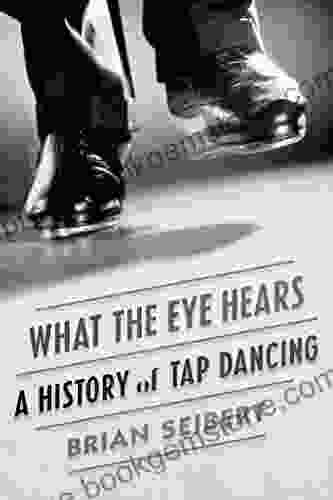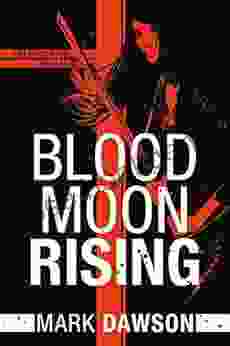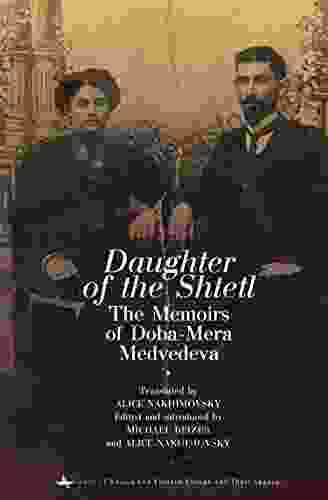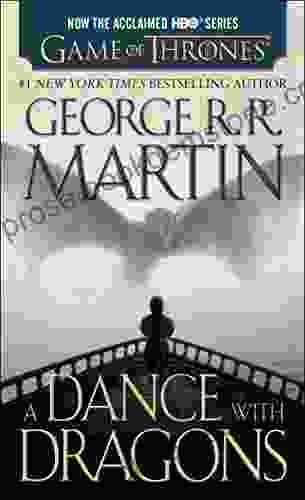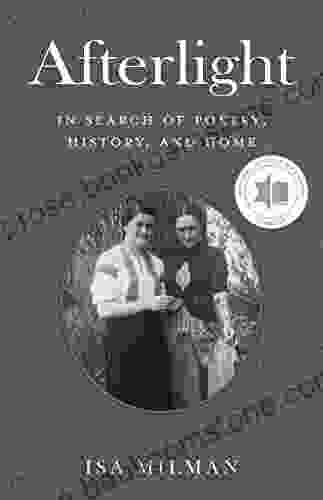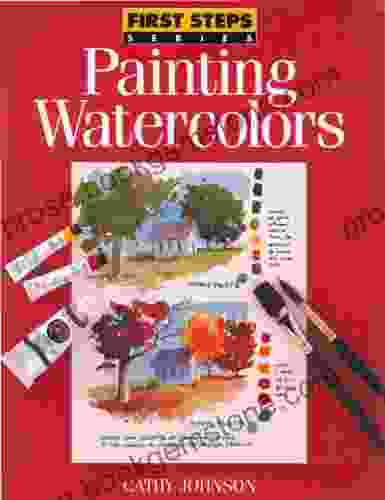The Evolution of Tap Dancing: Tapping Through the Eras

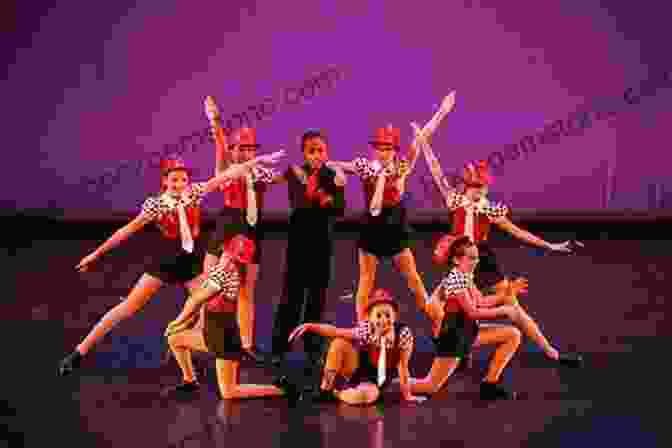
Origins and Early Influences
Tap dancing, a vibrant and rhythmic art form, traces its roots to the early 1800s in the African American communities of the United States. It emerged as a synthesis of African polyrhythmic footwork and the rhythmic traditions of Irish and Appalachian clog dancing.
4.7 out of 5
| Language | : | English |
| File size | : | 7369 KB |
| Text-to-Speech | : | Enabled |
| Screen Reader | : | Supported |
| Enhanced typesetting | : | Enabled |
| Word Wise | : | Enabled |
| Print length | : | 624 pages |
Irish step dancers, who had immigrated to the US, showcased their intricate footwork at social gatherings. African American dancers, inspired by these performances, began to incorporate elements of Irish stepping into their own percussive dances. This fusion gave birth to a new style known as "buck and wing" dancing.
Buck and Wing: The Precursor
Buck and wing dancing, popular in the 1840s-1860s, involved complex footwork and elaborate arm gestures. Dancers would perform syncopated rhythms, tapping their feet on wooden floors or metal plates. This style emphasized quick, percussive steps and improvisational elements.
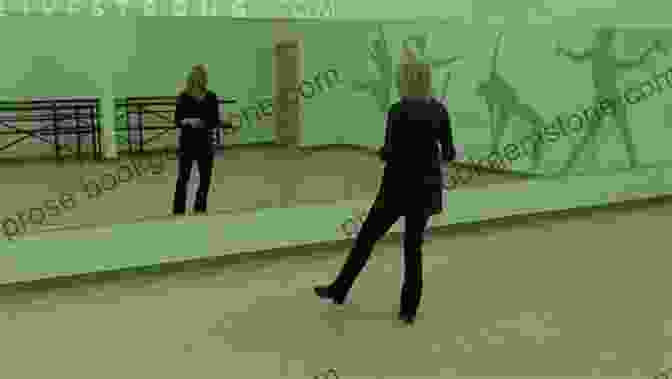
The Evolution of Tap Shoes
In the 1890s, a pivotal innovation transformed tap dancing: the invention of metal taps. Originally, dancers attached metal plates to the soles of their shoes, but these proved cumbersome and noisy. In 1896, the first patented tap shoes were created by William Henry Lane, an Irish-American vaudeville performer.
These shoes had small metal plates called "taps" attached to the toes and heels. They allowed dancers to produce a wider range of sounds and rhythms, enhancing the percussive aspect of the dance.
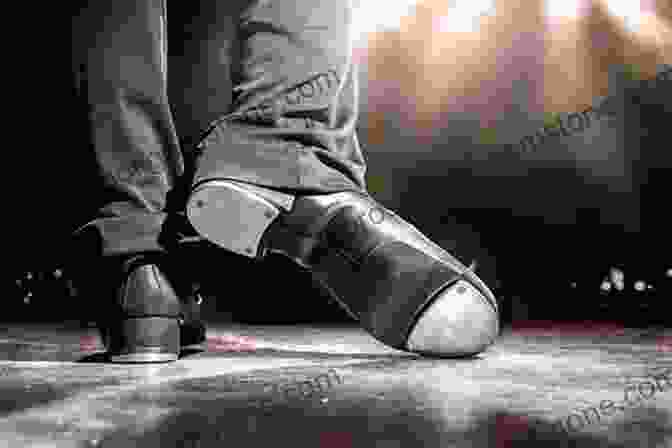
The Golden Age of Tap Dancing
The early 20th century marked the "Golden Age of Tap Dancing." Vaudeville and Broadway stages became the platforms for tap dancers to showcase their skills. Performers like Bill "Bojangles" Robinson, Fred Astaire, and Ginger Rogers popularized the art form.
Robinson, known for his lightning-fast footwork and improvisational brilliance, became a legend in the entertainment industry. Astaire and Rogers mesmerized audiences with their elegant and sophisticated tap routines in films like "Swing Time" and "Top Hat."
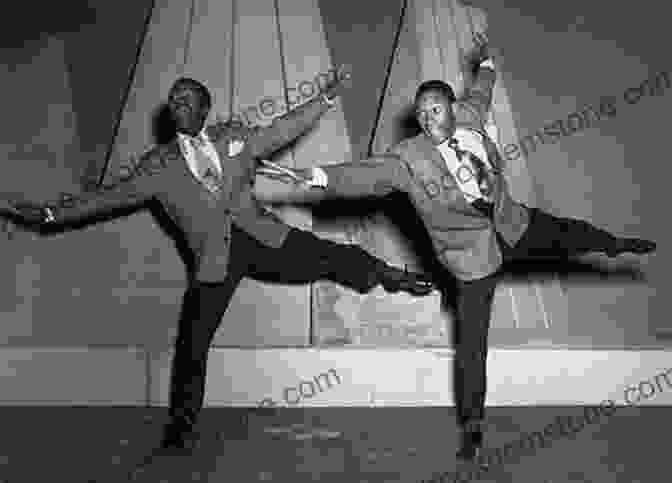
Tap Dancing in the Modern Era
The popularity of tap dancing declined somewhat after the Golden Age, but it continued to evolve and find new expressions. In the 1950s and 1960s, jazz tap dance emerged, fusing jazz music with tap rhythms. Performers like Gregory Hines and Savion Glover pushed the boundaries of the art form.
Today, tap dancing remains a vibrant and versatile dance style. It is taught in dance schools worldwide and is often incorporated into musical theater, film, and television performances.
Regional Variations and Substyles
Over the decades, tap dancing has developed regional variations and substyles. Some notable examples include:
- Harlem Tap: Originating in Harlem, New York, this style emphasizes syncopated rhythms and complex footwork.
- Chicago Tap: Developed in Chicago, Illinois, this style is known for its fast tempos, improvisational solos, and "shuffles" (sliding steps).
- Rhythm Tap: This style focuses on precise rhythms and intricate foot patterns, often accompanied by music.
- Jazz Tap: Fuses jazz music and tap rhythms, incorporating improvisation and syncopated steps.
Legacy and Influence
Tap dancing has had a profound impact on the world of dance and beyond. Its rhythmic vitality and expressive power continue to inspire performers and audiences alike.
The legacy of tap dancing is evident in various aspects of popular culture, from musicals and films to television shows and music videos. It has also influenced other dance styles, including jazz, hip-hop, and funk.
As a testament to its enduring popularity, tap dancing remains a beloved and cherished art form, captivating audiences worldwide with its intricate footwork, rhythmic expression, and timeless appeal.
4.7 out of 5
| Language | : | English |
| File size | : | 7369 KB |
| Text-to-Speech | : | Enabled |
| Screen Reader | : | Supported |
| Enhanced typesetting | : | Enabled |
| Word Wise | : | Enabled |
| Print length | : | 624 pages |
Do you want to contribute by writing guest posts on this blog?
Please contact us and send us a resume of previous articles that you have written.
 Best Book
Best Book Page Flip
Page Flip Bookshelf
Bookshelf Literary loom
Literary loom Chapter
Chapter Bookish
Bookish PageTurner
PageTurner Bibliophile
Bibliophile Story
Story Inkwell
Inkwell Bookworm
Bookworm Labyrinth
Labyrinth Plot Twist
Plot Twist Prose
Prose Paperback
Paperback Storyteller
Storyteller Sanctuary
Sanctuary Fiction
Fiction Reading
Reading Chronicle
Chronicle Read
Read Scott David Plumlee
Scott David Plumlee Deborah Ball
Deborah Ball Ken Lozito
Ken Lozito Carlos Francisco Jackson
Carlos Francisco Jackson C Shortt
C Shortt D Dauphinee
D Dauphinee Leo Buijs
Leo Buijs Parshwika Bhandari
Parshwika Bhandari Victor Manibo
Victor Manibo Bruce Ansley
Bruce Ansley Thomas Kinkade
Thomas Kinkade Linda Przybyszewski
Linda Przybyszewski Carmen Reid
Carmen Reid Tim Hannigan
Tim Hannigan Carolyn Han
Carolyn Han Brian Seidman
Brian Seidman Nicolas Rothwell
Nicolas Rothwell Tananarive Due
Tananarive Due Cheryl Burke
Cheryl Burke Diana Somerville
Diana Somerville Bruce Spydar
Bruce Spydar Iris Scott
Iris Scott Lonely Planet
Lonely Planet Virginia Hein
Virginia Hein Brandi Rarus
Brandi Rarus Cain Carroll
Cain Carroll R Annie Gough
R Annie Gough Dana Mahan Jr
Dana Mahan Jr Eric Henze
Eric Henze Casey Diaz
Casey Diaz Jenny Volvovski
Jenny Volvovski Chronicle Books
Chronicle Books Vanessa Riley
Vanessa Riley Camilla Erickson
Camilla Erickson Graham Mackintosh
Graham Mackintosh Renee Rose
Renee Rose J T Skye
J T Skye Paul Smith
Paul Smith Breeze Holding The Moon
Breeze Holding The Moon Bryan Miles
Bryan Miles Niobia Bryant
Niobia Bryant Tony Bartelme
Tony Bartelme K Wan
K Wan Karma Waltonen
Karma Waltonen Brian Wright Mcleod
Brian Wright Mcleod Dave Pelzer
Dave Pelzer D J Conway
D J Conway Dianne Hales
Dianne Hales Brian Hicks
Brian Hicks Dan X Solo
Dan X Solo Michael Bierut
Michael Bierut Rachel Felder
Rachel Felder Brady J Crytzer
Brady J Crytzer Buie Harwood
Buie Harwood Brian Seibert
Brian Seibert Tom Hayden
Tom Hayden Jenifer Ringer
Jenifer Ringer Luca Somigli
Luca Somigli Mary Stuart
Mary Stuart Ken Steele
Ken Steele G L Carriger
G L Carriger Carlyn Beccia
Carlyn Beccia Caseen Gaines
Caseen Gaines Sarah Jane Downing
Sarah Jane Downing Carolyn Birrell
Carolyn Birrell Lyn Wilkerson
Lyn Wilkerson Brian Smith
Brian Smith Mike Lyon
Mike Lyon Kate Schelter
Kate Schelter Magnus Reid
Magnus Reid Brette Sember
Brette Sember Gaston Migeon
Gaston Migeon Kai Kupferschmidt
Kai Kupferschmidt Brien Foerster
Brien Foerster Mark Dawson
Mark Dawson Yuwanda Black
Yuwanda Black C J Cherryh
C J Cherryh Lily Koppel
Lily Koppel Darin Martineau
Darin Martineau Michael Jacobs
Michael Jacobs Booker T Washington
Booker T Washington Shirish Deshpande
Shirish Deshpande Tao Wong
Tao Wong Mimi Robinson
Mimi Robinson Burton Bernstein
Burton Bernstein Kimberlee Yolanda Williams
Kimberlee Yolanda Williams Eufrasia Gagliardo
Eufrasia Gagliardo Thomas S Abler
Thomas S Abler Julia Sherman
Julia Sherman Dl Acken
Dl Acken Joan See
Joan See Ramin Zahed
Ramin Zahed Dennis Tupicoff
Dennis Tupicoff Carolyn Brown
Carolyn Brown Robin Capon
Robin Capon Pyae Moe Thet War
Pyae Moe Thet War Mira Jacob
Mira Jacob Carole S Kessner
Carole S Kessner Brian D Meeks
Brian D Meeks William Matson
William Matson Josh Malerman
Josh Malerman Peter Mutabazi
Peter Mutabazi Dwayne Walker
Dwayne Walker C T Rwizi
C T Rwizi Robert Littell
Robert Littell Brandon Webb
Brandon Webb Robert Barr Smith
Robert Barr Smith D L Young
D L Young Bruce Bradley
Bruce Bradley Kathleen Mccormack
Kathleen Mccormack Bruce Schoenfeld
Bruce Schoenfeld Camelia Elias
Camelia Elias Bruce T Batchelor
Bruce T Batchelor Brian Borgford
Brian Borgford Sister Dang Nghiem
Sister Dang Nghiem Eric Walters
Eric Walters Laylah Roberts
Laylah Roberts Jasmine Tritten Llc
Jasmine Tritten Llc Byron Comstock
Byron Comstock Maya Jasanoff
Maya Jasanoff Scaachi Koul
Scaachi Koul Susan Kennedy
Susan Kennedy Wilder Page
Wilder Page Rick Cheadle
Rick Cheadle Tad Crawford
Tad Crawford Timon Screech
Timon Screech Murry E Page
Murry E Page Nate Staniforth
Nate Staniforth Sudhir Hazareesingh
Sudhir Hazareesingh Carl Weber
Carl Weber Carol Miller
Carol Miller Tamar Arslanian
Tamar Arslanian Dessy Tsolova
Dessy Tsolova Chris Willis
Chris Willis John Waters
John Waters Peter Rhee
Peter Rhee Eric Grzymkowski
Eric Grzymkowski Simon Loxley
Simon Loxley Nate Crowley
Nate Crowley Robert Lamouroux
Robert Lamouroux Carol Berry
Carol Berry George R R Martin
George R R Martin Robert Egan
Robert Egan Marilyn Ann Moss
Marilyn Ann Moss Carsten Wieland
Carsten Wieland Matt Brown
Matt Brown Gary Chandler
Gary Chandler Johnnie Gentle
Johnnie Gentle Bruce Kennett
Bruce Kennett Brit Bennett
Brit Bennett Brooke Rundle
Brooke Rundle Yumiko Alexander
Yumiko Alexander Claudia Romo Edelman
Claudia Romo Edelman Liane Grunberg Wakabayashi
Liane Grunberg Wakabayashi Gail Grant
Gail Grant Rachael Lynn
Rachael Lynn Ella Maven
Ella Maven Candy Moore
Candy Moore Bill Plympton
Bill Plympton Vladimir Sorokin
Vladimir Sorokin Margarida Araya
Margarida Araya Mia Black
Mia Black Elsa Sjunneson
Elsa Sjunneson Frederick Joseph
Frederick Joseph Carol Bolt
Carol Bolt Inc Complex Media
Inc Complex Media Caroline Scott
Caroline Scott Caroline Johnson
Caroline Johnson J C Moore
J C Moore Cale Plamann
Cale Plamann David L Sloan
David L Sloan David H Levy
David H Levy Carly Murden
Carly Murden Melissa R Klapper
Melissa R Klapper Carol Belanger Grafton
Carol Belanger Grafton Mark Arnold
Mark Arnold Caitlyn O Leary
Caitlyn O Leary Keith Mccloskey
Keith Mccloskey Zitkala Sa
Zitkala Sa Carla L Peterson
Carla L Peterson Rosalind Rosenberg
Rosalind Rosenberg Tod Polson
Tod Polson Michael Frary
Michael Frary Carrie Fisher
Carrie Fisher Taniece
Taniece Sara Rudin
Sara Rudin D B Goodin
D B Goodin Brandon Massey
Brandon Massey Camilla Townsend
Camilla Townsend Jack L Roberts
Jack L Roberts Polly Evans
Polly Evans Charles Earl Bradbury
Charles Earl Bradbury Mynor Schult
Mynor Schult Eve Laplante
Eve Laplante Bruce Sutherland
Bruce Sutherland Kateri Ewing
Kateri Ewing Paul E Fallon
Paul E Fallon Lucy R Lippard
Lucy R Lippard Tom Wolfe
Tom Wolfe Brian Evans
Brian Evans John Campbell
John Campbell Tj Silverlake
Tj Silverlake Carol A Krejci
Carol A Krejci Brittany K Barnett
Brittany K Barnett Jenny Lawson
Jenny Lawson Tanya Lapointe
Tanya Lapointe Janice Seto
Janice Seto Jake Jackson
Jake Jackson Donna Digiuseppe
Donna Digiuseppe Mario Puzo
Mario Puzo Robbie Freeman Shugart
Robbie Freeman Shugart Sandy Allison
Sandy Allison Erik Stafford
Erik Stafford Bryce W James
Bryce W James J R Grey
J R Grey C J Box
C J Box Catherine Gill
Catherine Gill Stephen Mertz
Stephen Mertz Joe Ide
Joe Ide Stuart Kendall
Stuart Kendall Janet Whittle
Janet Whittle Gretchen M Baker
Gretchen M Baker Pearl S Buck
Pearl S Buck Peter Moruzzi
Peter Moruzzi Darla Mayberry
Darla Mayberry Tanith Lee
Tanith Lee Timothy Zahn
Timothy Zahn Oliver La Farge
Oliver La Farge Jerry Remy
Jerry Remy Laila Ibrahim
Laila Ibrahim Jeffrey Ross
Jeffrey Ross K G Crawford
K G Crawford Max Vance
Max Vance Jillian Vose
Jillian Vose Brando Skyhorse
Brando Skyhorse Pete Dunne
Pete Dunne Christy Brown
Christy Brown Jack Vance
Jack Vance Cathie Ruggie Saunders
Cathie Ruggie Saunders Miles J Unger
Miles J Unger C M Carney
C M Carney Cassie Dandridge Selleck
Cassie Dandridge Selleck Kevin Winkler
Kevin Winkler Brian Lawrenson
Brian Lawrenson Carolyn J Brown
Carolyn J Brown Lisa Fenn
Lisa Fenn Shane Lochlann Black
Shane Lochlann Black Carrie Cariello
Carrie Cariello Sheri S Tepper
Sheri S Tepper Michael Sragow
Michael Sragow Ernesto Mallo
Ernesto Mallo Guy Haley
Guy Haley Brendan Nuenfeldt
Brendan Nuenfeldt Kate Fullagar
Kate Fullagar Walter Mosley
Walter Mosley Tara M Stringfellow
Tara M Stringfellow Brooke Barbier
Brooke Barbier Steven V Roberts
Steven V Roberts David Crow
David Crow Mara Jaye
Mara Jaye Carol Wood
Carol Wood Mark Wandrey
Mark Wandrey Marceline Smith
Marceline Smith Mindy Lighthipe
Mindy Lighthipe Peter Cawdron
Peter Cawdron Bradford Bates
Bradford Bates Tim Jeal
Tim Jeal Kelly Sheldrick
Kelly Sheldrick Jesse Leon
Jesse Leon Bridget Quinn
Bridget Quinn Connie Fleenor
Connie Fleenor Susan Hill
Susan Hill Brad Leone
Brad Leone Butch Hartman
Butch Hartman Jan Grue
Jan Grue Greg Keyes
Greg Keyes Jennie Batchelor
Jennie Batchelor Michael Moon
Michael Moon Bruce Baird
Bruce Baird Perry Buck
Perry Buck Whitney Crothers Dilley
Whitney Crothers Dilley Olivia Riley
Olivia Riley Carole Robson
Carole Robson Greater Than A Tourist
Greater Than A Tourist Bridget Conor
Bridget Conor Milo James Fowler
Milo James Fowler Troy Howarth
Troy Howarth Michael Lent
Michael Lent David Gerrold
David Gerrold Catherynne M Valente
Catherynne M Valente C White Foss
C White Foss Vaughn Heppner
Vaughn Heppner Mike Gayle
Mike Gayle Carrie Summers
Carrie Summers Brittney C Cooper
Brittney C Cooper Lidia Bastianich
Lidia Bastianich Mark Greenside
Mark Greenside Michael Hingson
Michael Hingson Relaxed Venues
Relaxed Venues Kellie Stafford
Kellie Stafford Lee Hammond
Lee Hammond Scott Finazzo
Scott Finazzo Edgardo Cozarinsky
Edgardo Cozarinsky Scott Hughey
Scott Hughey Suzette D Harrison
Suzette D Harrison David Ryan
David Ryan Bob Able
Bob Able Brenda Jackson
Brenda Jackson Herbie J Pilato
Herbie J Pilato Ems Publishing
Ems Publishing Meena Alexander
Meena Alexander Karyn Langhorne Folan
Karyn Langhorne Folan Mandy Pattullo
Mandy Pattullo Brittney Brooke
Brittney Brooke Richard Mayhew
Richard Mayhew Keisha J
Keisha J James Tate Hill
James Tate Hill Bwwm Love
Bwwm Love Tiffanie Didonato
Tiffanie Didonato Joe Palermo
Joe Palermo Bev Sellars
Bev Sellars Kelly Kordes Anton
Kelly Kordes Anton Emily Sturgill
Emily Sturgill Paul Clammer
Paul Clammer Paul Reps
Paul Reps Madeleine L Engle
Madeleine L Engle Lisa Colozza Cocca
Lisa Colozza Cocca Burst Books
Burst Books Bob Elliott
Bob Elliott Jennifer Smith Turner
Jennifer Smith Turner Gretchen Rubin
Gretchen Rubin Russell Maddicks
Russell Maddicks Carolyn Schulz
Carolyn Schulz Sara Alm
Sara Alm Jennifer Julie Miller
Jennifer Julie Miller Judith Heumann
Judith Heumann Yolanda Hadid
Yolanda Hadid Eric Bravo
Eric Bravo Dolly Parton
Dolly Parton Toni Bentley
Toni Bentley M R Forbes
M R Forbes Sven Lindqvist
Sven Lindqvist Rafael De Grenade
Rafael De Grenade Mz Creates
Mz Creates James O Reilly
James O Reilly Camille Laurens
Camille Laurens Vrasidas Karalis
Vrasidas Karalis Jacques Vankirk
Jacques Vankirk Veronica Lawlor
Veronica Lawlor Sean Adams
Sean Adams Kirsten Pai Buick
Kirsten Pai Buick Daniel Arenson
Daniel Arenson Frances Mayes
Frances Mayes J F Martel
J F Martel Caitlin Starling
Caitlin Starling Carole Zucker
Carole Zucker Heriberto Padilla
Heriberto Padilla Griff Hosker
Griff Hosker Linda Grant
Linda Grant James Steffen
James Steffen John Clites
John Clites Cat Seto
Cat Seto Catherine Kerrison
Catherine Kerrison Liron Yanconsky
Liron Yanconsky Caroline Knapp
Caroline Knapp James N Yamazaki
James N Yamazaki William Hogarth
William Hogarth Cathy Johnson
Cathy Johnson Toni Braxton
Toni Braxton John Logan
John Logan Kimolisa Mings
Kimolisa Mings Noell K Wolfgram Evans
Noell K Wolfgram Evans Wayne Mardle
Wayne Mardle Maria Holderbaum
Maria Holderbaum Caterine Milinaire
Caterine Milinaire Brian C Baer
Brian C Baer Vladimir Geroimenko
Vladimir Geroimenko Brian Ladd
Brian Ladd Sonia Cheadle
Sonia Cheadle Brandon Q Morris
Brandon Q Morris Brian Ashcraft
Brian Ashcraft C H Duryea
C H Duryea Carolyn Porter
Carolyn Porter Rheni Tauchid
Rheni Tauchid Charlene Mciver
Charlene Mciver Remco Ensel
Remco Ensel Nick Caistor
Nick Caistor John Wagner
John Wagner The Editors Of New York Magazine
The Editors Of New York Magazine Ian Olio
Ian Olio Dave Walsh
Dave Walsh Bell Hooks
Bell Hooks Caroline Self
Caroline Self Maurice Broaddus
Maurice Broaddus Bradford Pearson
Bradford Pearson Jason Diamond
Jason Diamond Marge Piercy
Marge Piercy Marji Hill
Marji Hill Craig Anderson
Craig Anderson Sarah Spencer
Sarah Spencer Danielle Bernstein
Danielle Bernstein Rodolphe Lasnes
Rodolphe Lasnes James Mcbride
James Mcbride Foundation Of Flexographic Technical...
Foundation Of Flexographic Technical... Scott D Smith
Scott D Smith Lincoln Child
Lincoln Child Kamal Saleem
Kamal Saleem Donald Keene
Donald Keene Russell Harris
Russell Harris C Carr
C Carr Michelle Burford
Michelle Burford Paul Chiasson
Paul Chiasson Gene H Bell Villada
Gene H Bell Villada Kelsey Oseid
Kelsey Oseid Shaun King
Shaun King Lauren Kessler
Lauren Kessler George Alec Effinger
George Alec Effinger Brian Dickinson
Brian Dickinson Maud Guilfoyle
Maud Guilfoyle Lincoln Cushing
Lincoln Cushing David Gilmore
David Gilmore Zora Neale Hurston
Zora Neale Hurston H Peter Alesso
H Peter Alesso Tosha Lavette
Tosha Lavette Niall Williams
Niall Williams Mark Lewis
Mark Lewis David Kalat
David Kalat Brenda Ferguson Hodges
Brenda Ferguson Hodges Eric Shanes
Eric Shanes Carole Massey
Carole Massey Terry Galloway
Terry Galloway Jason Anspach
Jason Anspach Mikhail Uspensky
Mikhail Uspensky Lacy Crawford
Lacy Crawford Elin Hilderbrand
Elin Hilderbrand Vicki Zoradi
Vicki Zoradi Karl Fulves
Karl Fulves Leigh Ann Gale
Leigh Ann Gale Jennine Capo Crucet
Jennine Capo Crucet Elise Young
Elise Young Katie Douglas
Katie Douglas S K Dunstall
S K Dunstall Emiko Ohnuki Tierney
Emiko Ohnuki Tierney Catherine Craft
Catherine Craft Jill Winch
Jill Winch Robin Hobb
Robin Hobb Howard Schultz
Howard Schultz Mark Leonard
Mark Leonard C V Walter
C V Walter Mike Jack Stoumbos
Mike Jack Stoumbos Gabriel Weisz Carrington
Gabriel Weisz Carrington Francene Hart
Francene Hart Brendan Keogh
Brendan Keogh David Steffen
David Steffen Haytham Al Fiqi
Haytham Al Fiqi Michelle Kuo
Michelle Kuo Ben Box
Ben Box Justin Spizman
Justin Spizman Rabbi Lynnda Targan
Rabbi Lynnda Targan Cal Patch
Cal Patch Isa Milman
Isa Milman David Sayers
David Sayers Carrol L Henderson
Carrol L Henderson Bryon Macwilliams
Bryon Macwilliams Carmen Sheldon
Carmen Sheldon C S Leaf
C S Leaf John Berger
John Berger Dean Foster
Dean Foster Shaku Atre
Shaku Atre Brian C Hailes
Brian C Hailes Emiko Yamamoto
Emiko Yamamoto Brian Herbert
Brian Herbert Hugh Leach
Hugh Leach Mark Allen
Mark Allen Joel Shepherd
Joel Shepherd Kay Bratt
Kay Bratt Joshua Slocum
Joshua Slocum Sallust
Sallust Ednor Therriault
Ednor Therriault C Gockel
C Gockel Daniel J Sharfstein
Daniel J Sharfstein Caren Schnur Neile
Caren Schnur Neile Joe R Frinzi
Joe R Frinzi Mineko Iwasaki
Mineko Iwasaki Stephen Kohler
Stephen Kohler Jay Wolf
Jay Wolf Terrence K Williams
Terrence K Williams Brian Harker
Brian Harker Drmw
Drmw Carole Angier
Carole Angier S C Eston
S C Eston Janice Oberding
Janice Oberding Jane Urquhart
Jane Urquhart W E B Du Bois
W E B Du Bois William T Vollmann
William T Vollmann Daphne Jenkins Sheldrick
Daphne Jenkins Sheldrick N K Jemisin
N K Jemisin Kellee Wynne Conrad
Kellee Wynne Conrad Robert Noble Graham
Robert Noble Graham Marcia Iwatate
Marcia Iwatate Kimi Cunningham Grant
Kimi Cunningham Grant Marie Arana
Marie Arana Parvati Sharma
Parvati Sharma Briar Levit
Briar Levit Brontez Purnell
Brontez Purnell Mary C Olson
Mary C Olson Jared Blando
Jared Blando Eddie Jaku
Eddie Jaku Gerald M Kilby
Gerald M Kilby Clayton Graham
Clayton Graham Olivia De Havilland
Olivia De Havilland Carolina Rose
Carolina Rose James Graham Baker
James Graham Baker Carl Hiaasen
Carl Hiaasen Lynn Gilbert
Lynn Gilbert Marcos Enrique Ruiz Rivero Ii Aviel
Marcos Enrique Ruiz Rivero Ii Aviel Gerald S Strober
Gerald S Strober S J A Turney
S J A Turney Sarah Garland
Sarah Garland Kris Timken
Kris Timken Jennifer Niven
Jennifer Niven Peter Razor
Peter Razor Tom Segev
Tom Segev Caroline Weber
Caroline Weber Reyna Grande
Reyna Grande Peggy Dean
Peggy Dean Charles Kenney
Charles Kenney Brian Broome
Brian Broome Suzanne Woods Fisher
Suzanne Woods Fisher Jonathan Raban
Jonathan Raban Nikqua
Nikqua Victoria Smith
Victoria Smith Tom Bergeron
Tom Bergeron Robert L Forward
Robert L Forward Tasha Black
Tasha Black Sharon C Cooper
Sharon C Cooper J A Fielding
J A Fielding Delaney Diamond
Delaney Diamond Mike Watt
Mike Watt Brian Dougherty
Brian Dougherty Kate Furnivall
Kate Furnivall Carl E Schorske
Carl E Schorske C B Griesbach
C B Griesbach Maturin Murray Ballou
Maturin Murray Ballou Leanne Howe
Leanne Howe Dawn Prince Hughes
Dawn Prince Hughes Brooke Hayward
Brooke Hayward Elayne Silva Reyna
Elayne Silva Reyna John Muir
John Muir Sterling Edwards
Sterling Edwards Capt Ron Nielsen
Capt Ron Nielsen Stephanie Elizondo Griest
Stephanie Elizondo Griest Didier Ghez
Didier Ghez Gary Gibson
Gary Gibson Norberto Chaves
Norberto Chaves Howard Beckerman
Howard Beckerman Constantin Step
Constantin Step Roberto Sandorez
Roberto Sandorez Catherine Porter
Catherine Porter Dan Moren
Dan Moren Kevina Hopkins
Kevina Hopkins Ilhan Omar
Ilhan Omar Carter Hasegawa
Carter Hasegawa Devon C Ford
Devon C Ford Mateus Batista
Mateus Batista Sabeeha Rehman
Sabeeha Rehman June Foray
June Foray
Light bulbAdvertise smarter! Our strategic ad space ensures maximum exposure. Reserve your spot today!
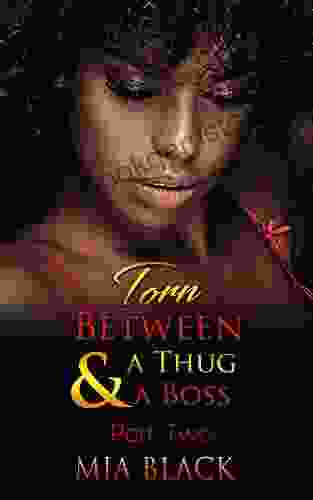
 Seth HayesTorn Between Thug Boss Complicated Love Series: Exploring the Tangled Web of...
Seth HayesTorn Between Thug Boss Complicated Love Series: Exploring the Tangled Web of... Al FosterFollow ·5.6k
Al FosterFollow ·5.6k Ian McEwanFollow ·2.5k
Ian McEwanFollow ·2.5k Fabian MitchellFollow ·2.9k
Fabian MitchellFollow ·2.9k Junichiro TanizakiFollow ·16.5k
Junichiro TanizakiFollow ·16.5k Peter CarterFollow ·16.4k
Peter CarterFollow ·16.4k Blake KennedyFollow ·4.5k
Blake KennedyFollow ·4.5k Jon ReedFollow ·10.9k
Jon ReedFollow ·10.9k Reginald CoxFollow ·9.2k
Reginald CoxFollow ·9.2k
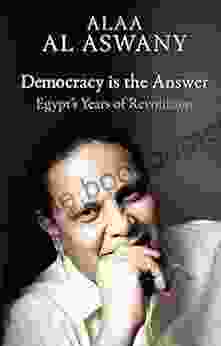
 Tony Carter
Tony CarterEgypt's Years of Revolution: A Journey Through Tumultuous...
Egypt, a nation steeped in...
4.7 out of 5
| Language | : | English |
| File size | : | 7369 KB |
| Text-to-Speech | : | Enabled |
| Screen Reader | : | Supported |
| Enhanced typesetting | : | Enabled |
| Word Wise | : | Enabled |
| Print length | : | 624 pages |


